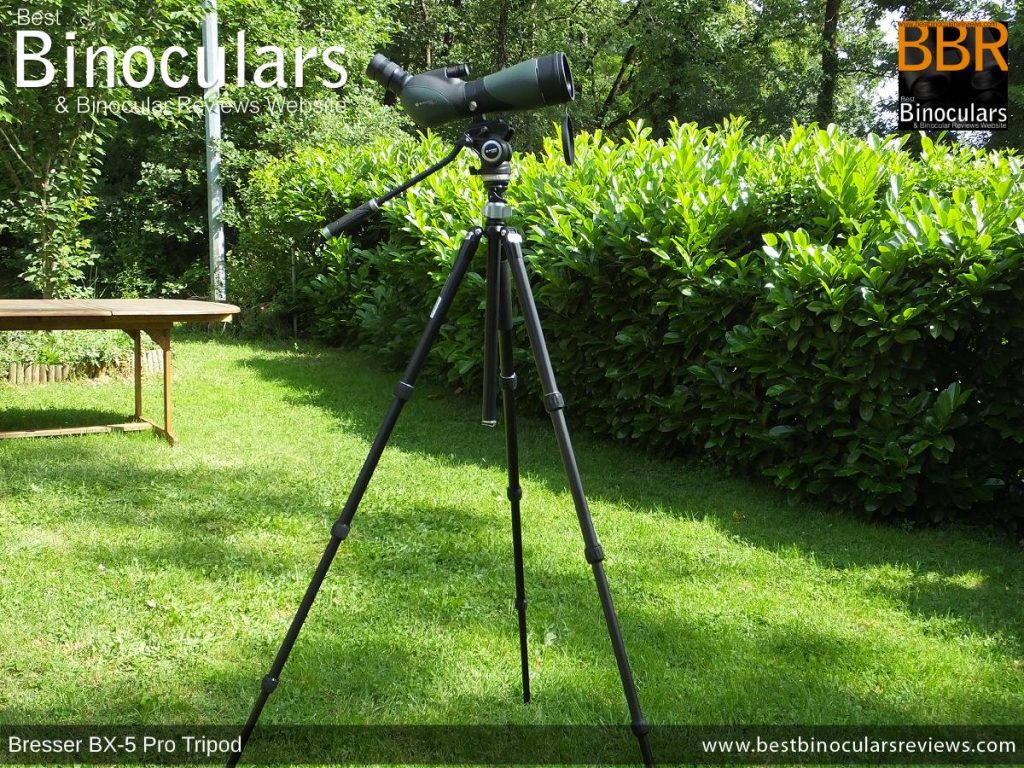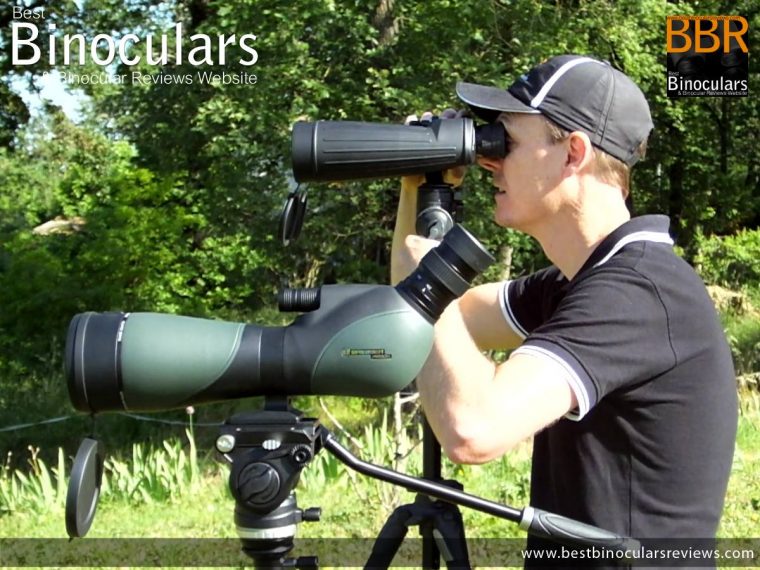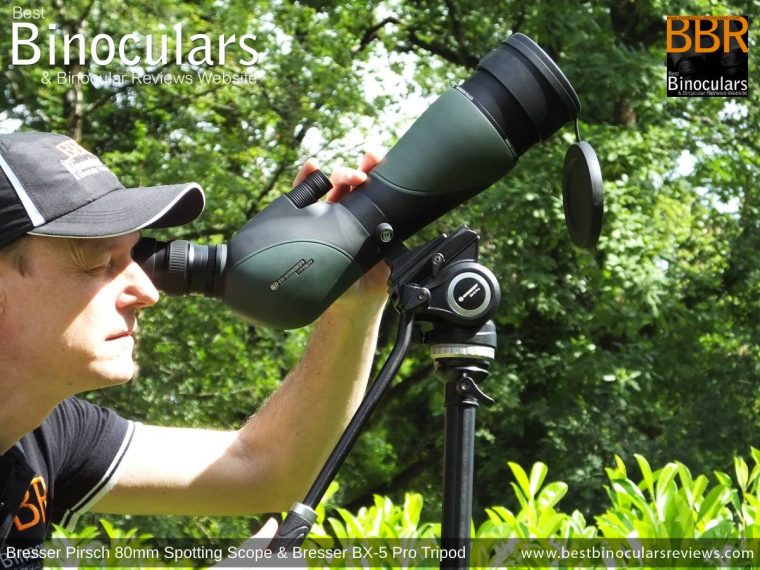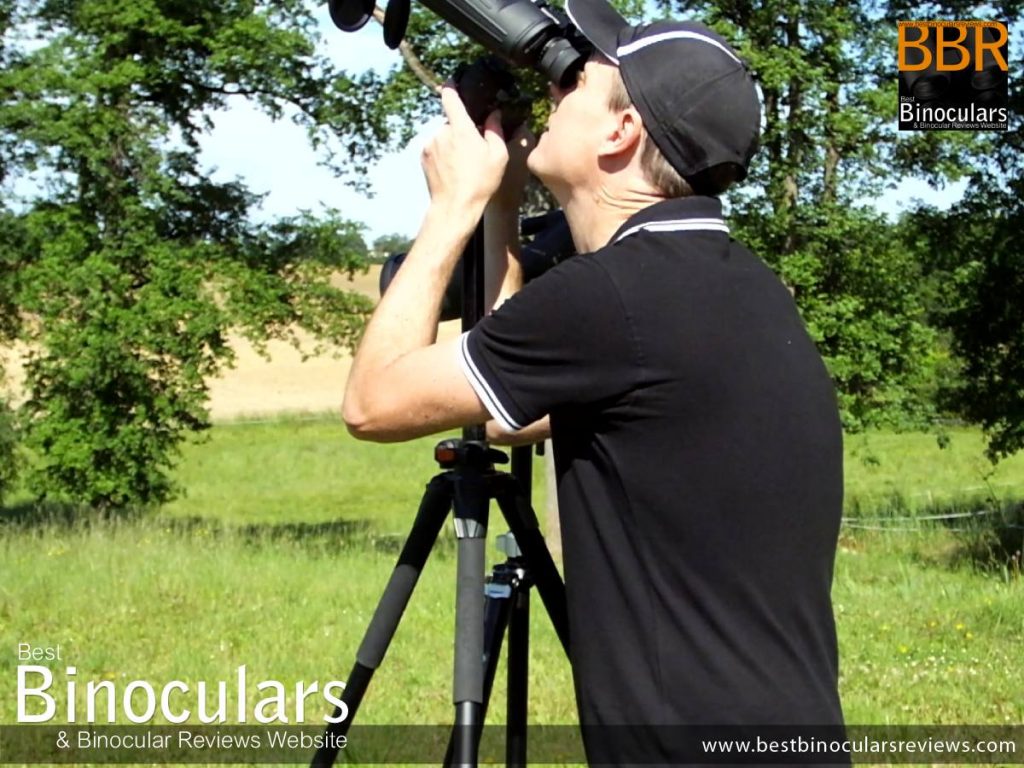Using Tripods with Binoculars & Spotting Scopes: Height & Eyepiece Angles!
In this article as well as the video above, I go over a couple of important considerations to keep in mind in terms of the height and stability when looking for and selecting a tripod for binoculars or spotting scopes.
Recently I have gone through somewhat of a spate of testing spotting scopes and high power binoculars for both terrestrial observation and astronomy All these instruments either necessitate the use of a tripod or just function optimally when mounted on top of one and as such I have been using tripods even more than usual.
So because I am having to constantly attach different instruments onto my tripods and set them up for different uses it has highlighted a number of key points to me which I feel are worth keeping in mind if you are in the market for a tripod to use with either a spotting scope or binocular.

Tripod Height
Unless you planning on sitting down, whichever tripod you get will ideally be able to extend up high enough and remain sturdy for you to comfortably use your scope or binoculars without having to always bend your back and/or knees.
Straight vs Angled Eyepieces
Apart from your actual height, the main point to keep in mind in this regard is whether the instrument you will be using has straight-through or angled eye-pieces.
Here there is no “right”, or “best” option as both straight and angled eyepieces have their particular advantages over each other, so it just depends on your preferences and how or what you will mostly be using your spotting scope or binocular for.

Horizontal/Terrestrial Observation (Looking at the Horizon)
A binocular or spotting scope that has an angled eyepiece arrangement (30°, 45°, or 90° to the barrel/s) requires you to partly stand over it and look downwards into the eyepiece when the instrument is pointing horizontally and looking at the horizon and thus your setup in this situation does not need to be quite as tall as you are.
Whereas the most comfortable setup for looking at the horizon when using a binocular or scope on the tripod that has a straight-through eyepiece design requires you to raise-up the tripod to where the eyepiece on your instrument is level eyes with and thus with this combination, your setup needs to be almost as tall as you are or to be more more precise: your eye-height.

Looking Skywards (Astronomy, Birds, Plane Spotting, etc).
The differences in setup height becomes even more pronounced if you want to turn your gaze skywards, be that for daytime uses like viewing eagles on the wing, birds in tall trees or plane spotting, or nighttime uses like stargazing, viewing planets, the moon and other forms of astronomy:
Here an angled eyepiece is most comfortable at your natural eye-height and so needs to be raised-up a little from your level horizon viewing position.
With straight-through eye-pieces you actually now need to get under the scope or binocular and thus in this situation to be most comfortable, your tripod setup actually needs to be taller than you are.

Looking Downwards
If you need to look down, like for instance if you are on top of a cliff at the coast viewing seabirds, this is an area where an angled eyepiece design can become a disadvantage (especially with binoculars) as it can be quite difficult and sometimes impossible to use depending on the angle.
With angled spotting scopes there is often a way around this as good ones enable you to loosen the collar and rotate the body relative to the tripod-head which partly neutralizes the angle on the eye-piece.
Binoculars – Eyepieces
Apart from a few exceptions (see my guide to Observation Binoculars with Angled Eyepieces), the vast majority of high powered, long distance binoculars will have a straight-through eyepiece design and thus you will need to make sure that the tripod setup you select can handle the extra height required.
Spotting Scopes – Eyepieces
These days most spotting scopes come with an angled eyepiece (usually 30°) and whilst becoming less common, you can still get straight-through options should you be mostly using your scope for horizontal and downward observation. Digiscoping is another area where the straight-through setup is often preferred as it is a little more intuitive to aim with when using it with a camera attached.
Tripod Stability
When not fully extended, in my experience, unless they are really flimsy, cheap, and nasty, most reasonably good quality tripods are fairly stable and can be perfectly adequate for use with lightweight binoculars or cameras.
However, the real acid test comes when you have to fully extend your tripod and especially when you are using heavier binoculars and or spotting scopes combined with high magnifications.
This is even more crucial if you are digiscoping or taking photos through your binoculars (digibinning) where even the slightest movement results in a blurry image.
So whilst it is not a guarantee of stability if you can’t test before buying, my suggestion is don’t opt for very cheap tripods as they are generally made to less exacting tolerances using lower-quality materials and components and as such are almost certainly not going to be as stable as a better quality option. Other than that take time to research and read/view some real honest reviews (like here on BBR!) where the user has actually used the tripod they are talking about.
Recommendations & Further Reading
- My Best Tripod for Binoculars & Scopes: Astronomy & Terrestrial Surveillance
- Observation Binoculars with Angled Eyepieces
- Bresser BX-5 PRO Video Tripod Review (used as the example in the video)
- Bresser Pirsch Gen II 20-60x80 Spotting Scope (used as the example in the video)
- Bresser Spezial Astro SF 15x70 Binoculars Review (used as the example in the video)
- Vanguard ABEO Pro 283CGH Tripod Kit (used as the example in the video)
- Best Binoculars for Astronomy
- Spotting Scopes – Reviews & Guides
- Angled or Straight Spotting Scope

 Article | Posted by Best Binocular Reviews
Article | Posted by Best Binocular Reviews 
 Categories:
Categories:  Tags:
Tags: 
